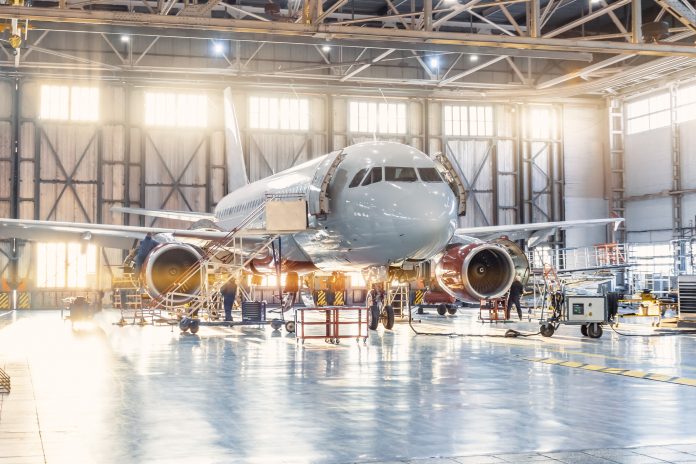The Science and Technology Facilities Council (STFC), IP Group, and Reaction Engines are joining forces to create a decarbonisation technology company to lead the transport sector to net-zero emissions
As the aviation and shipping sectors currently account for 5% of total global carbon emissions, with expectations of this amount to increase in the coming years, the collaborators aim to design and market net-zero technology.
Creating lightweight, compact cracking reactors for green ammonia by combining Reaction Engines’ heat exchanger technology developed for rocket engines, with STFC’s leading ammonia-cracker and catalysis expertise, with funding from IP Group.
Beginning as a kick-starter through the Harwell EnergyTec cluster, the partnership is to produce their lightweight and compact ammonia cracker reactors at the COP26 Summit in Glasgow this year.
How will they achieve net-zero transport?
Net zero-emission aircrafts and ships that emit only water vapour and nitrogen could become a reality in the next few years, thanks to this technology being developed by the company.
Kerosene-based jet fuel is the ideal fuel for aviation but produces substantial carbon emissions and has no carbon-free fuel equivalents.
However, net-zero alternatives pose their own challenges. For instance, while ammonia has a well-established global infrastructure of storage and transportation, it is challenging to combust. Hydrogen, on the other hand, combusts very readily and storage is a challenge.
If the best fuel traits of ammonia and hydrogen could be combined, air travel in the future could potentially become entirely free of carbon production. Thus, displaying the necessity of the partnership project.
Understanding ammonia-cracking
STFC’s cracker technology aims to mimic jet-fuel performance, hopefully offering an affordable solution through retrofitting existing aircrafts.
The technology is to use a heat exchanger, warming liquid ammonia as it travels to the engine, through a ‘cracking reactor’. The reactor uses a novel catalyst to partially crack the ammonia into its constituent elements, hydrogen and nitrogen.
This blended ammonia-hydrogen mixture produces a fuel that closely resembles the propulsion properties of jet fuel, in which the fuel mix is then ignited to power the engine, and when completely combusted leaves behind only nitrogen, water vapour and no particulates.
Despite these benefits, there is still the potential of nitrogen oxides as by-products. While nitrogen oxide is a pollutant, this is still able to be removed from the exhaust through the appropriate use of a small additional amount of ammonia.
The fuel created could eventually eradicate its own emissions.
Research acknowledgements
The project came about through the Harwell EnergyTec cluster and Cross Cluster Proof of Concept programme, which joins organisations across the energy, space, and life-sciences sectors to collaborate and fund research from theory to commercial reality.
STFC’s Dr Barbara Ghinelli, Director, Clusters and Campus Development at Harwell stated: “The UK has a great reputation for accessing the best available science and engineering, finding ways to innovate technological solutions to meet the net-zero challenge. The Harwell EnergyTec cluster and Net Zero Living Laboratory is one of the initiatives that can bring innovative technical solutions more quickly to market, contributing to the green economy.
“It has been a privilege to facilitate the collaboration between STFC, IP Group and Reaction Engines to kick off our Jetzero initiative. Our innovation work at STFC, captures the initial spark of an idea and takes it through to patent and spinout – managing the commercialisation journey end-to-end. It is a key link between innovation outputs of STFC and economic growth.”
Dr James Barth, Ammonia Programme Lead, Reaction Engines, added: “I am thrilled to see the hard work we’ve been undertaking with our partners at STFC culminate in the formation of new venture to bring to market decarbonisation technology solutions.
“Having IP Group’s backing is a huge vote of confidence in the compact, lightweight ammonia reactor technology we are developing. I am excited to work together to help decarbonise power and propulsion systems in the maritime, power generation, and other hard to abate sectors.”
Fully decarbonising flights and shipping across seas continues to be one of the more difficult technological challenges for net-zero economy aiming countries.
Dr Robert Trezona, Head of Cleantech, IP Group, said: “As the leading cleantech venture investor in the UK we are delighted to be partnering with two of the country’s most innovative organisations to pursue ammonia for energy. The combination of technologies from Reaction Engines and STFC is a profound breakthrough, and we are excited to be joining forces to build a technology champion in this space.”
This is a ground-breaking innovative net-zero development for high-carbon sectors like aviation and shipping.











